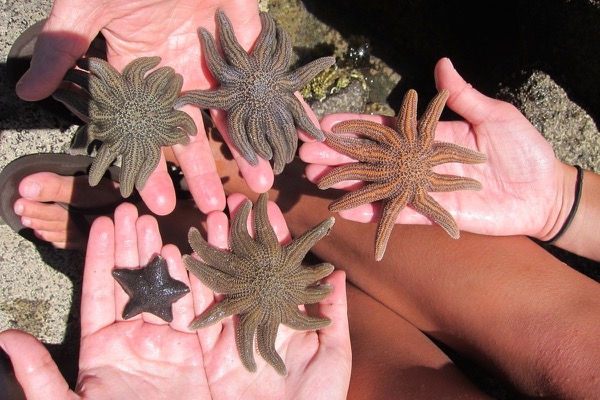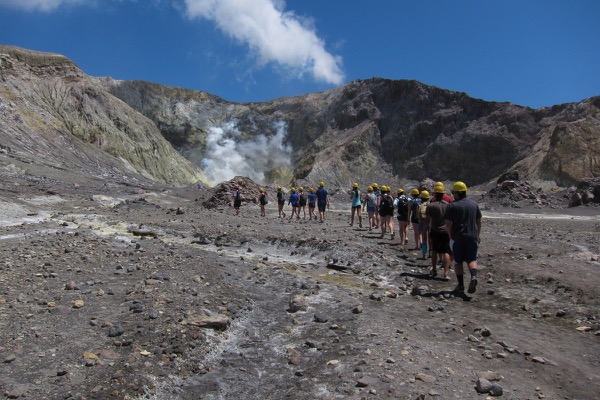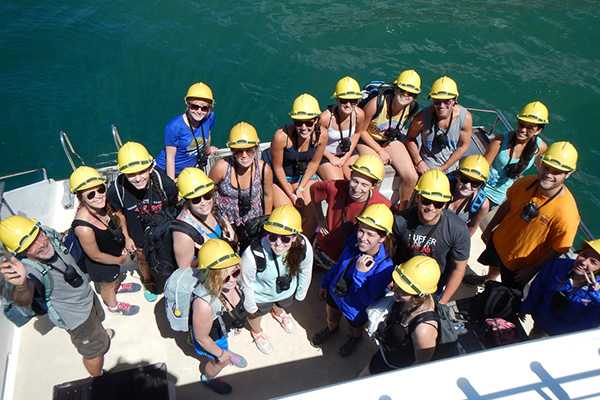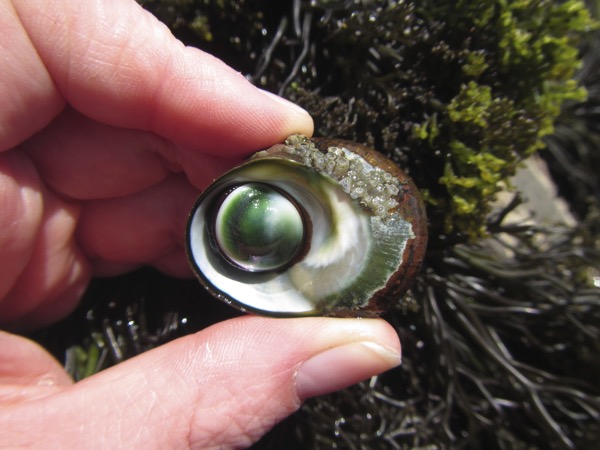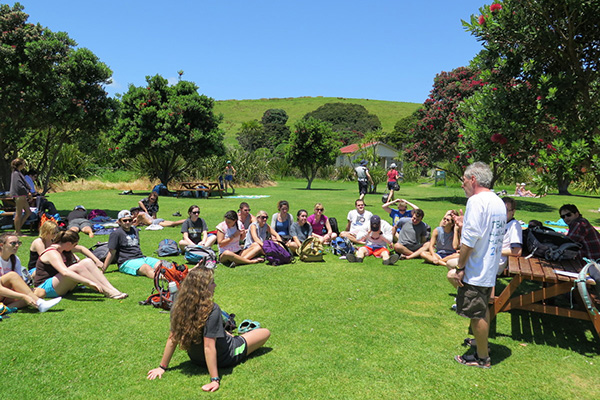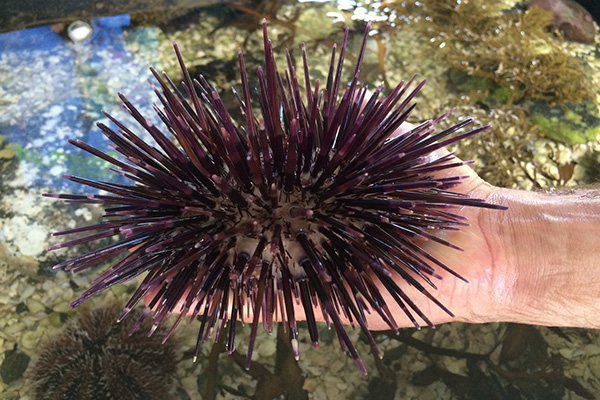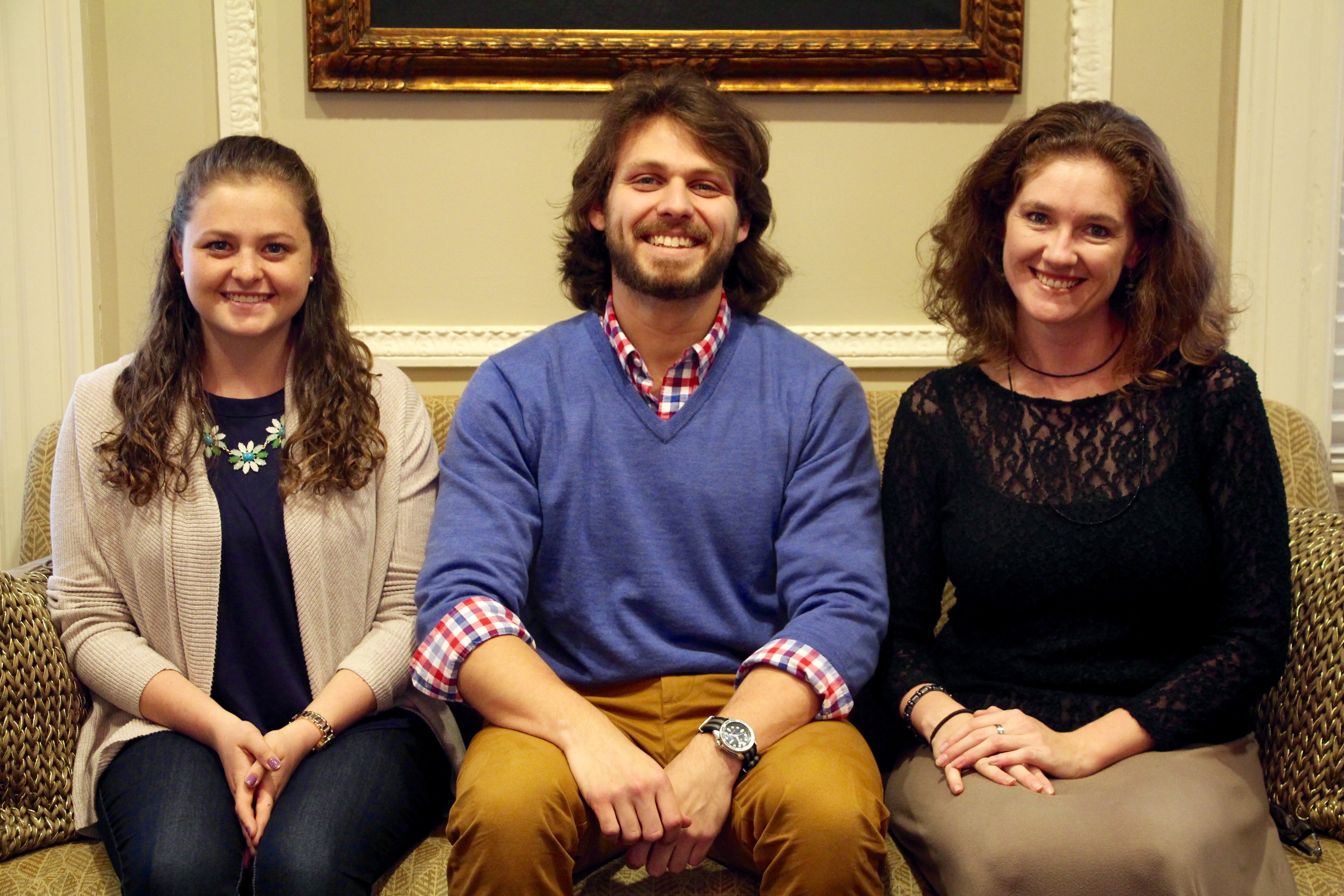Marine biodiversity
UD students study rich marine environment in New Zealand
12:41 p.m., Feb. 27, 2015--Twenty-three University of Delaware students spent Winter Session in sunny New Zealand, rafting down the Kaituna River, climbing an active volcano known as White Island, experiencing simulated Antarctic conditions at the International Antarctic Centre and touring Hobbiton, one of the sets used in the Lord of the Rings trilogy.
The four-week study abroad trip, offered by the College of Earth, Ocean, and Environment, was a fast-paced, cross-country adventure by charter bus, with the UD cohort rarely staying in one place more than two nights. The purpose was to allow the students to study as much of New Zealand’s varied marine life as possible in their two courses, coastal field biology and invertebrate biodiversity.
Global Stories
Fulbright awards
Peace Corps plans
Despite the marine biology focus, students from many majors are encouraged to go on the trip to provide as many different academic perspectives as possible.
“New Zealand’s sandy white beaches, crystal blue waters and tide pools offer students one of the best places in the world to study marine biology due to its amazing variety of organisms and habitats,” explained Douglas Miller, an associate professor of marine science who coordinates the trip along with Patrick Gaffney, also a marine science professor.
Ninety percent of New Zealand’s marine mollusks, for example, are not found anywhere else in the world. The diversity of marine habitats provide homes to more than 15,000 known species, and scientists estimate that there may be as many as 65,000 species, with seven new marine species identified every two weeks, according to New Zealand’s Department of Conservation.
Jeremy Keeler, a geology and environmental science double major, heard about the trip during a visit to the University as a prospective student. Now a junior, he said the trip enhanced his academic experience.
“This kind of work solidifies the concepts you learn in the classroom because you can actually see it in real life,” Keeler explained.
Classroom lectures by Miller, Gaffney and various guest speakers, including a UD graduate currently in graduate school in New Zealand, are followed by field work to explore the biodiversity and understand why certain organisms are found in each habitat.
While the same courses are available for students at UD, the experiences are different, Miller said. The classes in Delaware and New Zealand provide important hands-on opportunities out in the field, but New Zealand’s rich marine environment provides opportunities to study species not found in Delaware.
For some, the program is also a first look at life after college.
“It’s important for college-aged students to travel, meet new people and, in doing so, gain confidence to be out in the real world,” said Miller.
Junior Leah Morgan, a marine science major, said the trip allowed her to make new friends and have unique opportunities, enriching her entire experience at the University.
In particular, Morgan and Keeler will remember their stay with the Māori people, the indigenous Polynesian people of New Zealand, who comprise approximately 15 percent of the population.
Since settling in New Zealand, the Māori have developed their own language and mythology, as well as unique crafts and performing arts.
The UD students played games with Māori children, slept in a big room with mattresses on the floor and prepared a song for the Māori as part of a welcoming ceremony, Keeler said. The boys had to perform a dance the Māori taught them while the girls wove flex.
“It really opened my eyes to what’s out there beyond UD,” Morgan said.
Article by Cori Ilardi
Photos courtesy of Doug Miller and Ella Rothermel






